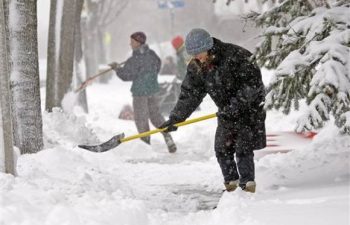Winter is difficult enough, but it gets even worse when pain is involved. If you suffer from knee pain, it comes as no surprise that it often increases during winter. Here are some explanations for this increased pain, and ways to combat it.
Cold Weather Causes
One theory is that a drop in barometric pressure, which measures the weight of air, can increase pain. Cold weather usually signals a drop in barometric pressure, which can make joints swell. It is also possible that synovial fluid, which protects your joints, becomes thicker in cold air, making it more difficult to do its job. Think of synovial fluid like oil in your car engine. Cold air makes the oil thicken, which makes it flow much less efficiently.
If you are out in the cold for extended amounts of time, your body diverts blood flow from your extremities to your vital organs. Less blood flow means less heat around your joints, making them stiff and painful. Cold weather can also reduce the amount of time you spend outdoors, limiting your physical activity.
How to Combat Painful Winter Joints
You can’t do anything about the weather, but here are some tips to make the winter less painful:
- Stay warm – if you are outdoors, bundle up. Pay extra attention to your extremities by wearing appropriate winter clothing. Consider wearing leggings or thermal underwear to protect your knees from the cold.
- Take warm baths to increase circulation.
- Keep up with exercise – if you cannot exercise outdoors, find an indoor walking path or head to your nearest mall to get your steps in.
- Pay attention to your diet – a healthy diet promotes health in all areas of your body.
Sometimes our knees hurt no matter what we do. If you find yourself in knee pain, Steven Struhl MD can help. Contact our office to schedule a consultation.




